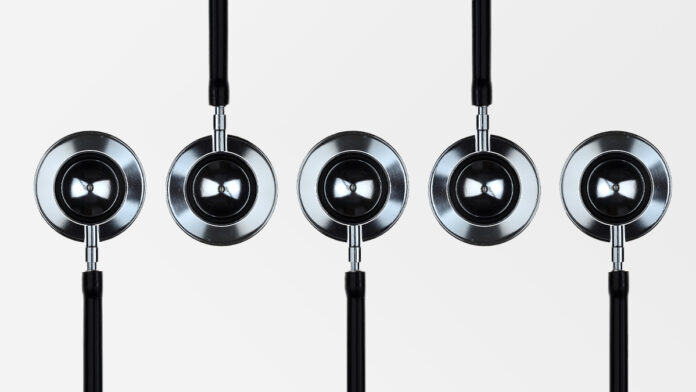By: Samantha F. Sanders, Ariel D. Stern, William J. Gordon
Published in the Harvard Business Review
July 02, 2020
Guidelines for Development and Implementation
These guidelines are drawn from our own experience managing remote-patient-monitoring programs, including one created specifically to care for Covid-19 patients, and research on the drivers of clinical success of established programs.
The technology must be easy for both patients and clinicians to adopt and continue using. It is essential to provide both patients and clinicians with intuitive equipment and user interfaces as well as resources for trouble-shooting when needed. Clinicians should be able to easily explain the equipment to patients, and it should be easy for patients to set up and use. The patient data generated by remote monitoring should also be simple to monitor and analyze.
This need is illustrated by a trial that studied remote monitoring of patients with congestive heart failure. In this trial, study physicians could not collect data for 12 out of 66 enrolled patients because these patients were unable to properly operate the mobile-phone-based monitoring device to begin data transmission.
The tools should be incorporated into clinician workflows. Given the high burden of administrative work that clinicians already face, it is imperative to introduce remote tools that blend seamlessly into their work processes. In some cases, this may require redesigning processes in order to ensure that remote monitoring is appropriately integrated into an organization’s practices.
For example, the administrators of a diabetes management program established at Massachusetts General Hospital found that they needed to modify the existing workflow for managing patients with diabetes in order to readily identify which patients required laboratory testing. Subsequently, the program built an application that remotely monitored diabetic patients and helped coordinate responsibilities for following up with patients about laboratory testing. This redesigned workflow improved efficiency by making it easier for nurse managers to remind patients about laboratory testing.
Sources of sustainable funding must be identified and tapped. This is especially critical at a time when hospitals are struggling financially due to the huge amount of revenue they have lost from pandemic-related cancellations and delays in performing surgeries and imaging.
Reimbursement for remote-patient-monitoring programs is challenging to navigate given that individual activities eligible for reimbursement — such as device set-up, patient education, interpretation of data, and follow-up patient conversations — are reimbursed separately. Nonetheless, reimbursement for such programs has improved with the advent of risk-based models of reimbursement such as Medicare Advantage plans and accountable care organizations, which offer providers increased flexibility in allocating capital to remote monitoring programs.
Many remote-patient-monitoring programs may have to rely on other sources of funding besides reimbursement, especially to fulfill upfront capital needs. In some instances, these sources of funding may be from the provider system’s operating budget. Internal innovation grants also may support programs. For instance, a diabetes remote monitoring program at Su Clinica Familiar, a federally qualified health center, was funded through a grant by the University of Texas System. Regardless of the nature of funding, we believe it is essential to identify a committed source of capital before establishing a remote-patient-monitoring program.
Dedicate sufficient non-physician staff to operate the program. A key reason this is necessary is that busy physicians will have difficulty carving out additional time to administer a program and sift through data. For example, Ochsner Medical Center in New Orleans developed a digital hypertension program staffed by pharmacists, who monitored 6,000 high-risk patients’ blood pressure readings remotely and followed up with patients via text and email. This program resulted in a significant increase in the proportion of patients who met their blood pressure goals.
As demonstrated by this example, it’s critical that staff in these roles are matched with the nature of the work. For instance, the complex tasks involved in hypertension-medication management might require a pharmacist or nurse as opposed to a patient navigator without clinical expertise.
Focus on digital health equity. Patients may appear to be better candidates for remote monitoring if they are younger, technologically savvy, or are fluent English-speakers. However, access to technology may be limited by poverty, and numerous other socio-demographic factors may influence engagement and participation in remote monitoring programs. At a time when the Covid-19 pandemic has disproportionately affected minority populations, care providers should go the extra mile to ensure that underserved patients not only have access to programs, but are also provided education and support needed to make them successful .
Start with an initial pilot and expand after demonstrated successes. Even in a pandemic setting in which time is of the essence, it is essential to demonstrate that remote patient monitoring initiatives improve clinical outcomes. Not all programs have demonstrated success, so the use of pilots can help avoid expensive mistakes. One successful program that scaled gradually is the Hospital of the University of Pennsylvania’s remote postpartum hypertension monitoring program. This program expanded from a small pilot to a larger clinical trial to the entire academic medical center based on evidence that it decreased admissions and costs associated with postpartum hypertension.
Covid-19 has created an opportunity to accelerate the adoption of remote patient monitoring as our health care system struggles to care for patients outside of the physical walls of a clinic or hospital. We encourage leaders to act decisively in establishing new programs by following best-in-class examples and guidelines. We believe that leaders who do so will spur a paradigm shift in how patient care is delivered that lasts far beyond the current crisis.
Source: https://hbr.org/2020/07/how-to-make-remote-monitoring-tech-part-of-everyday-health-care
Summary: This article points out interesting facets of remote health care. For example, the article calls for digital health equity and help with funding. These are wide scope real-world issues that are crucial to making a program like this work.




